SOURCE: ANI

Indian government reaffirmed its commitment to supporting the people of Palestine with a recent shipment of 30 tonnes of medical supplies amid the ongoing conflict in the Middle East.
This consignment includes essential medicines and anti-cancer drugs.
Ministry of External Affairs spokesperson Randhitr Jaiswal shared a post on X and stated, “India’s support to the people of Palestine continues. Extending humanitarian assistance to the people of Palestine sends 30 tonnes of medical supplies comprising essential life-saving and anti-cancer drugs to Palestine.”
Continue readingSOURCE: RAUNAK KUNDE / NEWS BEAT / IDRW.ORG

Dr. Mansoor Ahmed, an Honorary Lecturer at the Strategic and Defence Studies Centre of Australian National University, recently discussed India’s nuclear strategic goals on World Echo News with host Syed Muhammad Ali. Dr. Ahmed emphasized India’s growing commitment to bolstering its sea-based nuclear deterrent through an extensive fleet of nuclear-powered ballistic missile submarines (SSBNs). He suggested that the Indian Navy would likely need an arsenal of around 300 nuclear warheads exclusively for its SSBN fleet by 2035 to establish a credible deterrent.
India currently operates two Arihant-class SSBNs and has two more advanced S4-class SSBNs nearing operational status. The next generation, the S5 class, is expected to consist of three more SSBNs, ultimately expanding the fleet to a formidable six nuclear-capable submarines. The addition of these submarines underscores India’s focus on strengthening its nuclear deterrent with a credible second-strike capability, which will play a vital role in its broader defense strategy.
Continue readingSOURCE: RAUNAK KUNDE / NEWS BEAT / IDRW.ORG

In a significant boost to India’s Indigenous defence capabilities, French aerospace giant Safran has proposed to partner with India’s Gas Turbine Research Establishment (GTRE) for the development of a new 110kN engine to power India’s Advanced Medium Combat Aircraft (AMCA) program. As part of this collaboration, Safran has committed to leveraging Chennai’s growing pool of engineering talent, ensuring that most of the research and development (R&D) for the engine will now take place on Indian soil.
This proposal marks a key milestone in India’s push for self-reliance in defence manufacturing under the “Make in India” initiative, particularly in critical areas like jet engine technology, which has long been a strategic focus for the country.
Continue readingSOURCE: RAUNAK KUNDE / NEWS BEAT / IDRW.ORG

Bharat Dynamics Limited (BDL) and Hindustan Aeronautics Limited (HAL), in collaboration with the Indian Air Force (IAF), are looking to integrate Advanced Short Range Air-to-Air Missiles (ASRAAM) into the “Super Sukhoi” upgrade configuration for 84 Su-30MKI jets. This upgrade will replace the current Russian R-73 close-combat missiles in the Sukhoi fleet, enhancing the aircraft’s short-range air-to-air combat capabilities.
The ASRAAM, developed by the European defence manufacturer MBDA, is already operational on India’s Jaguar DARIN-III strike aircraft and the LCA Tejas Mk1A. Its successful deployment on these platforms has encouraged the IAF to push for further integration into the upcoming Tejas Mk2 and HAL’s CATS Loyal Wingman unmanned system, signaling a broader shift towards Western missile systems for close-combat engagements.
Continue readingSOURCE: AFI
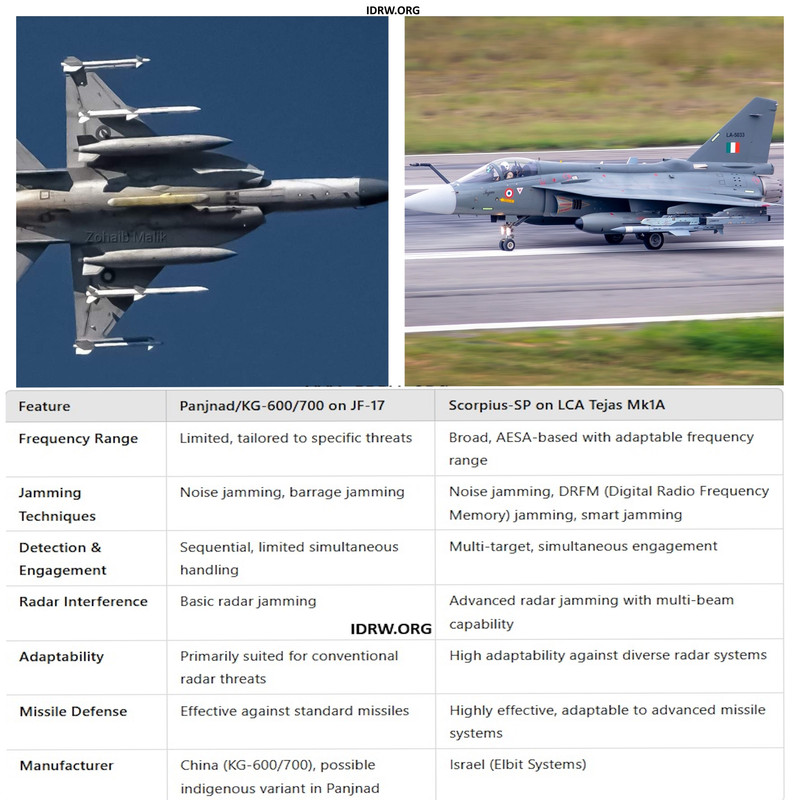
Electronic Warfare (EW) plays an increasingly crucial role in modern aerial combat, as it enables aircraft to avoid detection, disrupt enemy radars, and defend against missile threats. Two prominent self-protection jamming systems—the Panjnad/KG-600/700 series on Pakistan’s JF-17 and the Israeli-made Scorpius-SP system on India’s LCA Tejas Mk1A—highlight differing technological approaches and strategic goals. Here, we delve into a detailed comparison of these systems in terms of capability, range, adaptability, and strategic advantages.
The JF-17 Thunder, developed jointly by Pakistan and China, utilizes the KG-600 and potentially KG-700 jamming pods. These pods are believed to have originated from Chinese EW technology and are intended to improve the JF-17’s survivability in contested airspace.
Continue readingSOURCE: AFI

In a recent discussion with Syed Muhammad Ali, host of World Echo News, Dr. Mansoor Ahmed, an Honorary Lecturer at the Strategic and Defence Studies Centre, Australian National University, offered valuable insights into India’s nuclear submarine program. Dr. Ahmed highlighted that India’s fleet of nuclear ballistic missile submarines (SSBNs) could, in the coming years, exceed those of European nuclear powers such as France and the United Kingdom, both in size and capabilities. With an ambitious plan to deploy an array of SSBNs equipped with intercontinental ballistic missile (ICBM) capabilities, India’s navy is poised to become a formidable nuclear deterrent force in the Indo-Pacific region and beyond.
India currently operates two Arihant-class SSBNs and has two more advanced S4-class submarines in undergoing sea trials. These S4-class submarines are anticipated to feature enhancements in range, payload, and stealth compared to their predecessors. Following the S4-class, India plans to construct a new line of larger SSBNs under the S5-class program, with initial reports suggesting a total of three vessels, with the potential to expand this fleet to six units. These advancements signal India’s commitment to bolstering its sea-based nuclear deterrence capabilities.
Continue readingSOURCE: AFI
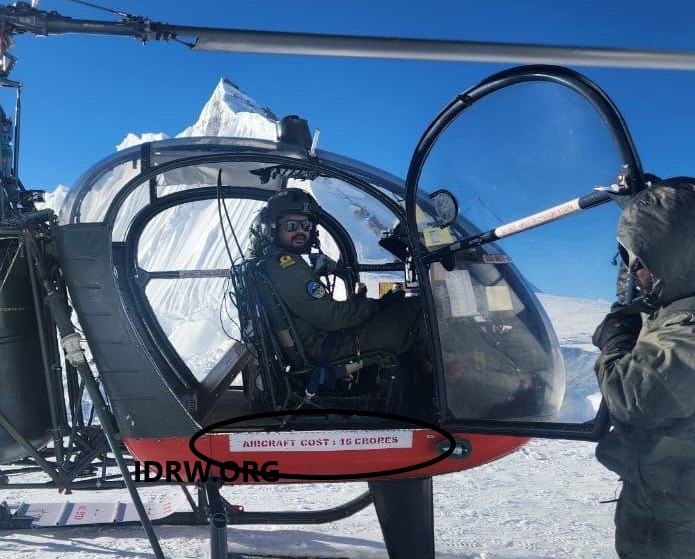
India’s defense community and internet users were recently amused by a curious sight on an Indian Army Cheetah helicopter, IA-3709, with the words “Aircraft Cost: 15 Crores” printed prominently in the cockpit section, just below the pilot’s seat. This discovery sparked lively discussions on Indian defense forums and Twitter, with many users expressing surprise and humor at this tradition, which has persisted within the Indian Army. Although the Indian Air Force has phased out this practice on newer aircraft, it remains part of a longstanding military custom for some branches.
The practice of marking aircraft with their production costs dates back several decades, with roots in the early days of military aviation in India. This tradition was originally implemented to instill a sense of responsibility among personnel, particularly pilots and ground crews, who operate, maintain, and secure these valuable assets. Displaying the cost served as a constant reminder of the significant national investment in these machines and encouraged a strong sense of duty to safeguard them.
Continue readingSOURCE: AFI

Tata Advanced Systems Limited (TASL), a leading aerospace and defense company, has highlighted the cutting-edge technologies and capabilities of its Aero-Engines (TCOE) facility in Hyderabad. The TCOE facility plays a crucial role in manufacturing critical components for the global aviation industry, including the LEAP engine for GE Aviation.
The TCOE facility boasts advanced technologies such as precision machining, thermal spray, electron beam welding, and more. These sophisticated techniques enable the production of high-quality, high-precision components that meet the stringent requirements of modern aircraft engines.
Continue readingSOURCE: PTI

Tata Sons Chairman N Chandrasekaran said Monday that the TATA Aircraft Complex, built in partnership with Airbus, aims to deliver its first C295 aircraft within the next two years. “Exactly two years from now, we will deliver the first indigenously manufactured C-295 Aircraft,” Tata Sons Chairman said in his address at the inauguration of the TATA Aircraft Complex for manufacturing C295 military transport aircraft in Vadodara in Gujarat.
Prime Minister Narendra Modi and his Spanish counterpart Pedro Sanchez inaugurated the country’s first private military transport aircraft production plant on October 28.
Continue readingSOURCE: PTI
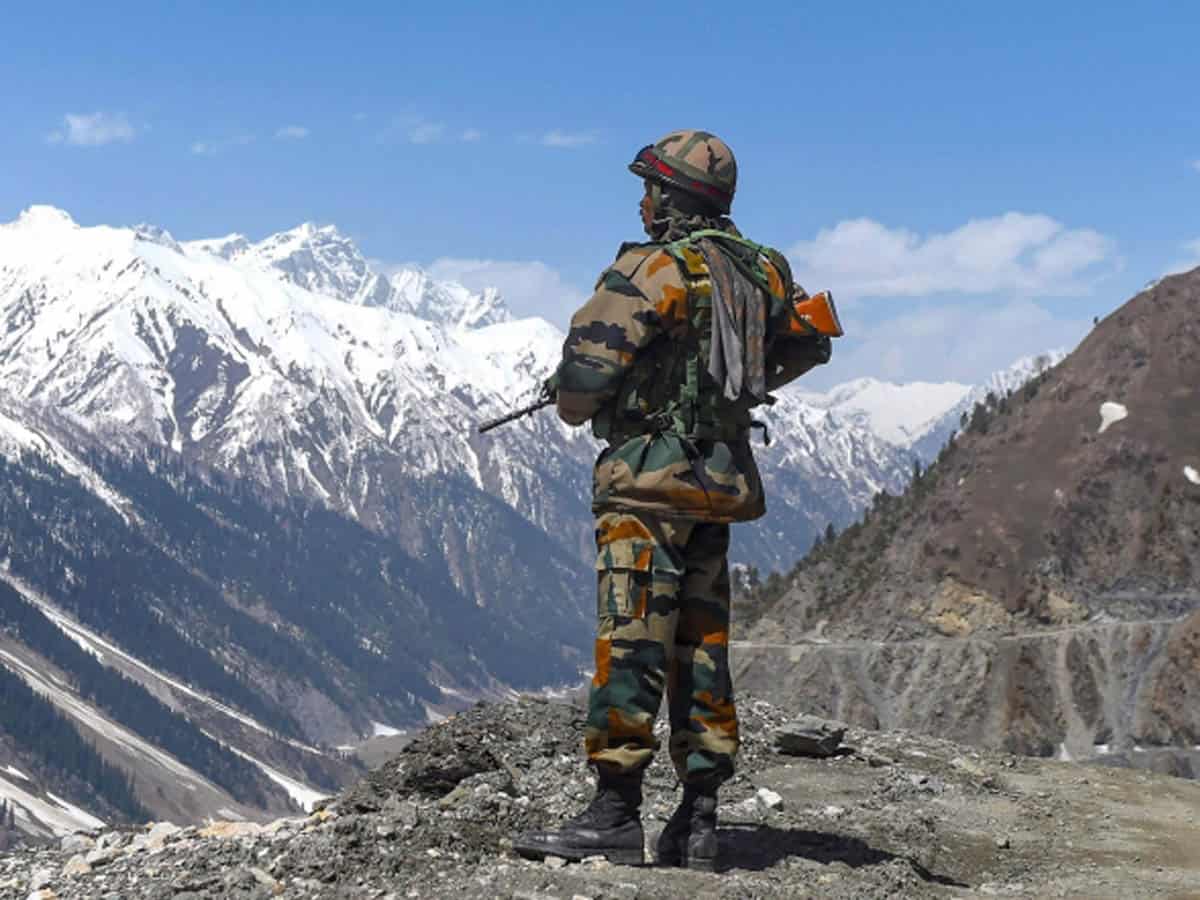
The military disengagement process between India and China on the Line of Actual Control (LAC) was believed to be completed on Monday even though latest reports suggest that the process is still going on in Depsang plains and Demchok — two ‘friction points’ — in Eastern Ladakh, sources said.
The military disengagement agreement is valid only for Demchok and Depsang plains and not other places.
Continue readingSOURCE: PIB
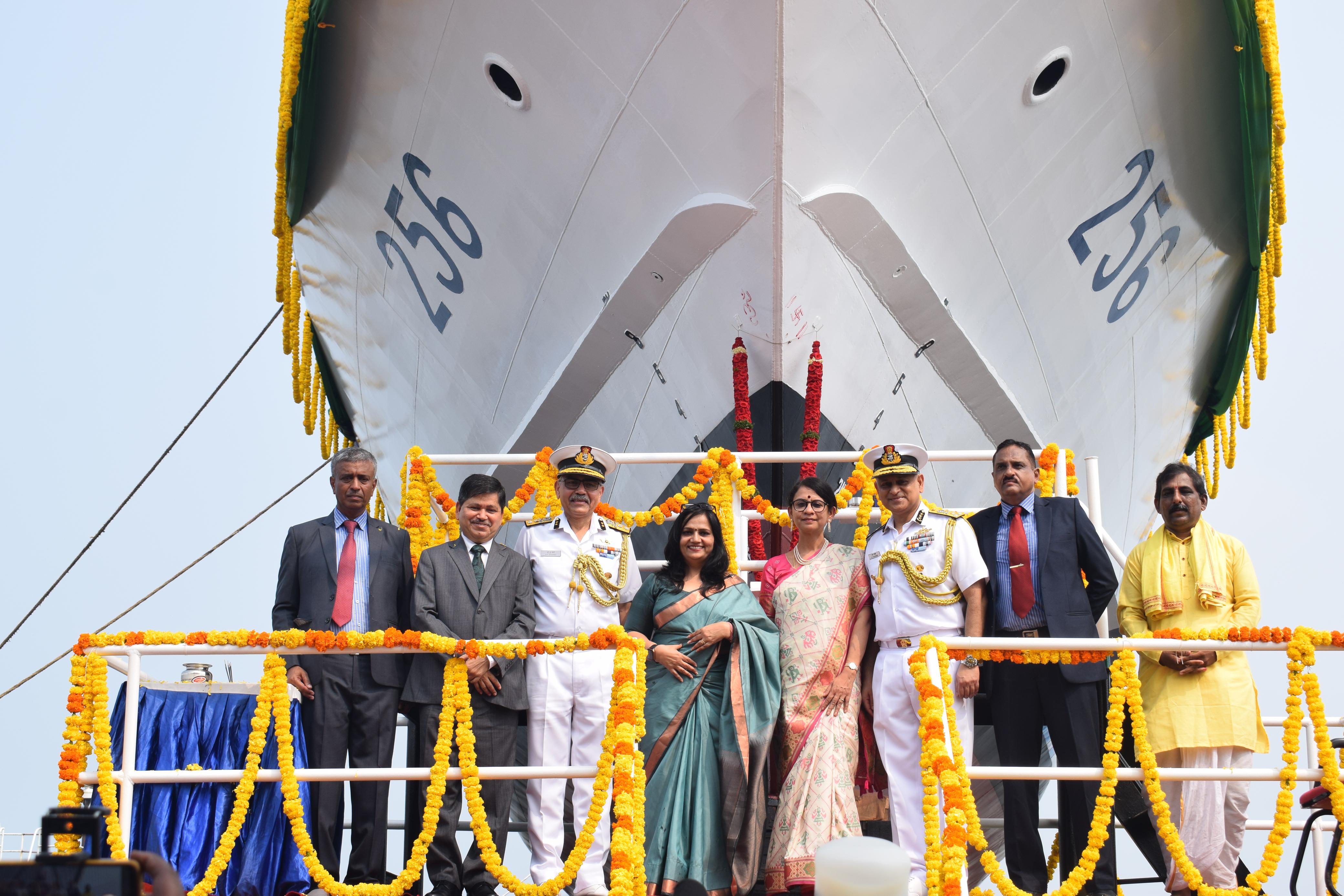
Indian Coast Guard (ICG) simultaneously launched two Fast Patrol Vessels (FPVs) ‘Adamya’ and ‘Akshar’, with over 60% indigenous content, built by Goa Shipyard Ltd. (GSL) on October 28, 2024. The vessels are part of the contract signed with GSL for eight such FPVs to be built at a cost of Rs 473 crore. With the primary role of protection, monitoring, control and surveillance, these advanced FPVs will help ICG protect offshore assets and island territories.
Each FPV has a length of 52m, breadth of 8m, max speed of 27 knots, Controllable Pitch Propeller-based propulsion system and displacement of 320 tons. The ships have been designed and constructed to meet the specific requirements of the ICG under stringent dual class certification of American Bureau of Shipping and Indian Register of Shipping.
Continue readingSOURCE: ANI
)
Navy Chief Admiral Dinesh Kumar Tripathi on Monday inaugurated the ‘Swavlamban 2024’ exhibition at Bharat Mandapam.
During his tour of the exhibition, Admiral Tripathi examined an anti-drone gun developed by an Indian firm. Speaking to ANI, the Navy Chief expressed happiness to witness the innovations from the country’s young entrepreneurs. He added that around 115 stalls have been set up by various agencies in the exhibition.
Continue readingSOURCE: PTI

Police on Sunday launched an investigation into a social media handle hailing Pakistan, accompanied by a video of Khamaria area where a blast occurred in the ordnance factory in Madhya Pradesh’s Jabalpur district six days ago, an official said.
The probe will focus on the place or the country of origin the X (formerly Twitter) handle, the relevance of the message, and four lines written in English in connection with the Ordnance Factory Khamaria (OFK) explosion on October 22 that left two persons dead and 15 others injured.
Continue readingSOURCE: PTI

An Army dog laid down its life after being hit by a bullet from terrorists during an encounter in the Akhnoor sector of the Jammu region on Monday, the force said.
The courage, loyalty and dedication of the canine — Phantom — will never be forgotten, it added. The Army’s Jammu-based White Knight Corps said in a post on X, “We salute the supreme sacrifice of our true hero — a valiant Indian Army dog, Phantom.” “As our troops were closing in on the trapped terrorists, Phantom drew enemy fire, sustaining fatal injuries,” it added.
Continue readingSOURCE: IANS
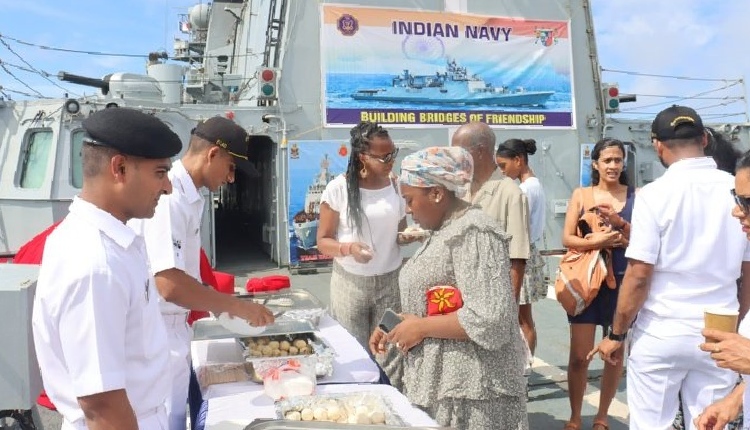
Indian Navy’s frontline stealth frigate, INS Talwar, arrived at La Reunion as a part of her ongoing deployment in the Indian Ocean Region, a statement said on Monday. “The visit to La Reunion aims to strengthen the India – France partnership to tackle regional maritime security challenges,” the statement said.
La Reunion is an island in the Indian Ocean that is an overseas region of France. Part of the Mascarene Islands, it is located approximately 679 km (422 mi) east of the island of Madagascar and 175 km (109 mi) southwest of the island of Mauritius.
Continue reading